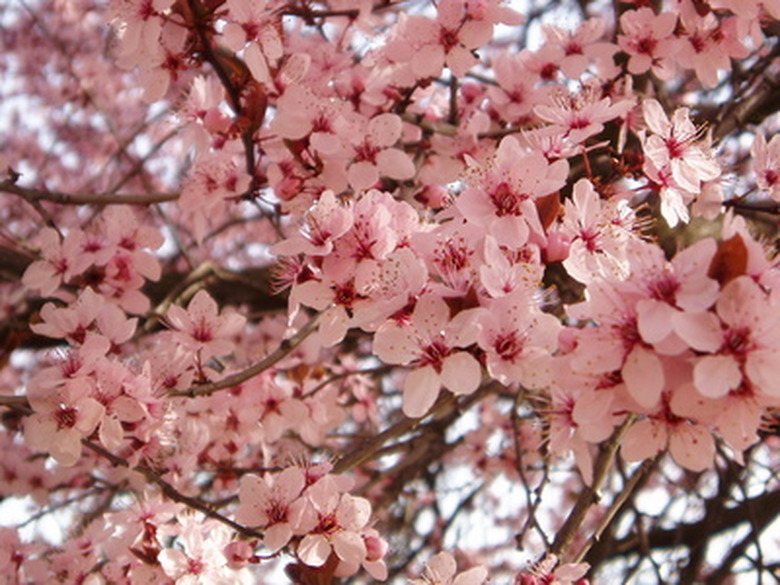Which Flowering Trees Bloom The Longest?
If you live in a climate with four seasons, spring puts joy in your heart. From the seemingly dead, brown-stick tree branches you've been staring at all winter, suddenly pink cherry blossoms, yellow forsythia and white dogwood pop open, lifting spirits and promising summer. Unfortunately, these blooms don't last very long.
In zones 9 and 10–the warmest zones on the U.S. Department of Agriculture's Plant Hardiness Zone map (see Resources)–trees of one kind or another bloom virtually year-round, and many have flowering seasons that last for months on end.
Crape Myrtle
The dependable crape myrtle, a popular tree all over the South, starts blooming in June and puts on a color show all summer long, often right up until frost. The flowers form erect ,cone-shaped clusters in shades that range from white and pale pink to deep crimson. Crape myrtle surely ranks as one of the longest blooming flowering trees. Plant them in clumps of three or more for greatest effect.
Yellow Elder
Although yellow elder blooms all year round in zone 10, it produces the most flowers in late spring, summer and early fall. This is an easy tree to care for and it's small, so it can be pruned to a shrub.
Southern Magnolia
The Southern magnolia is an evergreen tree. Its large, glossy leaves are a rich dark green on top and a warm brown underneath. This Southern favorite blooms all summer long, though intermittently. There is no grand display of many blossoms all at once like that of its northern cousin, the saucer magnolia, but the creamy white flowers can be as large as a dinner plate, and they are spectacularly luminous, almost glowing, against their shiny, dark green foliage.
Golden Rain Tree
If you don't happen to live zone 9 or 10, but want a tree with long-lasting color, consider this one. The golden rain tree seems to bloom twice. First, blooms of bright yellow appear in early summer. Then while there are still hundreds of yellow blossoms on the tree, another form of flower appears–this time a papery copper lantern that actually houses the tree's black seeds. This simultaneous double flowering makes the golden rain tree extremely unusual. The lanterns remain through the fall, so this tree appears to be in bloom for months. Hardy in zones 5 though 9, the golden rain tree is a fast grower that tolerates a wide range of soil types.
